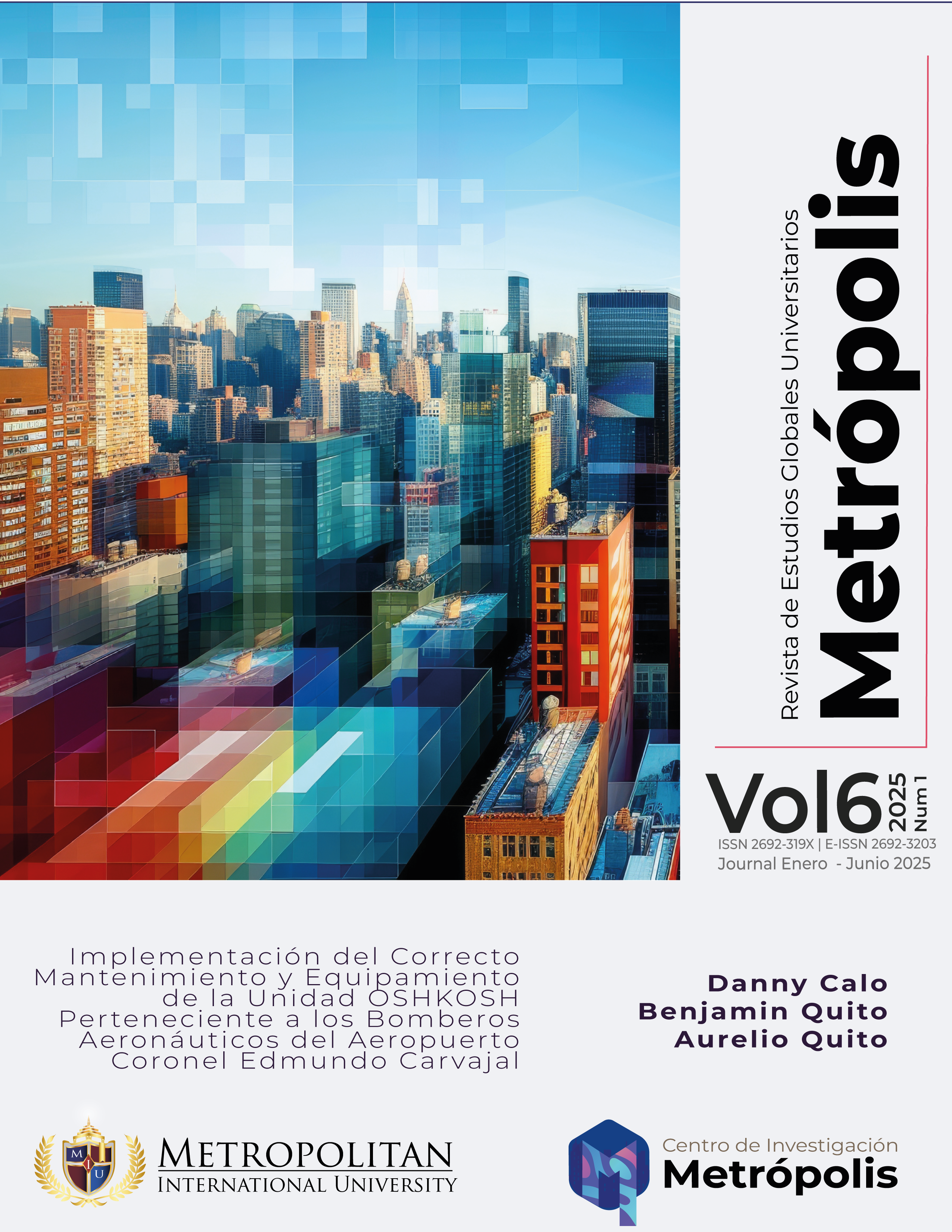Implementation of the Correct Maintenance and Equipment of the OSHKOSH Unit Belonging to the Aeronautical Firefighters of the Colonel Edmundo Carvajal Airport
Keywords:
Equipment maintenance, Emergency Unit, Fire Service, Aeronautical safety, Incident commandAbstract
This study analyzed the implementation of maintenance and protocols for the Oshkosh Striker fire truck at the Coronel Edmundo Carvajal Airport, employing a qualitative methodology that included semi-structured interviews with firefighters, case study analyses, and a comprehensive records, operational manuals, and maintenance logs. The findings revealed that integrating preventive-predictive maintenance strategies, aligned with international standards such as NFPA and ICAO Annex, significantly reduced downtime through early fault detection and real-time diagnostics. The Command Zone telematics system played a role by identifying anomalies in hydraulic, filters, and electrical systems, enhancing operational while minimizing unplanned costs. The research emphasized the continuous training, supported such as aircraft fire monthly drills and route optimization using GIS technology, which improved inter-team coordination and response times. Testimonials highlighted that maintenance documentation, managed through platforms like SAP, and rigorous internal audits ensured strong compliance with aviation safety regulations. The concluded that the implemented model serves as a benchmark in aviation safety by merging technological innovation, such as thermal cameras and foam systems, with local environmental adaptations, including dust-resistant sensors, and ethical risk management. For future initiatives, this methodology to airports challenges is recommended. Prioritizing investments in AI-driven predictive maintenance and immersive training tools, such as virtual reality simulations, will further enhance proactive emergency management. Additionally, adopting firefighting foams and fostering collaborations with international aviation safety networks could strengthen resilience against critical emergencies. This approach ensures compliance with international standards but also sets a precedent for integrating advanced technology and expertise to address complex safety challenges in Aviation

Downloads
Published
How to Cite
Issue
Section
License

This work is licensed under a Creative Commons Attribution-NonCommercial-ShareAlike 4.0 International License.



